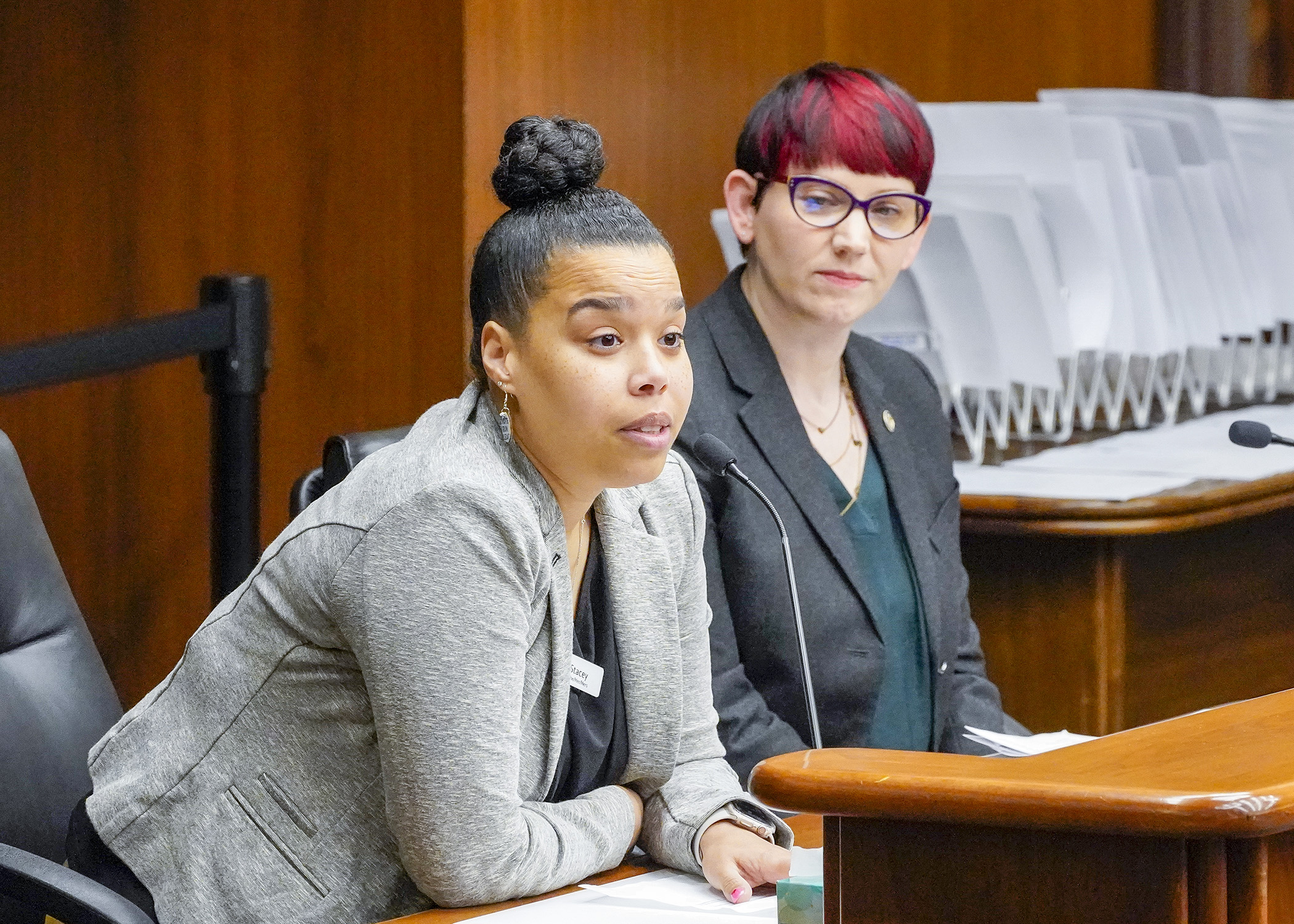Minnesota playing catch-up in funding youth intervention programs, advocates say

“The problems facing young people are persistent, real, pressing, and dangerous.”
Those words came from a high school student who listed some of what he and his friends encounter nearly every day: homelessness, alcohol and other drugs, fights in school, sexual assault, physical assault, students carrying firearms, shootings, and a growing number of suicides.
“The problems seem endless. It feels as if we are left to fend for ourselves,” said Anoka High School student Enzo La Hoz Calassara. “I’m asking you to help us.”
La Hoz Calassara spoke Thursday in support of a bill that would fund more community-based programs to support young people.
Rep. Sandra Feist (DFL-New Brighton) sponsors HF1048, which would appropriate $21.45 million in the 2024-25 biennium to fund Youth Intervention Programs managed by the Office of Justice Programs in the Department of Public Safety. Yearly appropriations would be $14.3 million beginning in fiscal year 2026 and each year beyond.
The House Public Safety Finance and Policy Committee laid the bill over, as amended, for future consideration.
Current funding is $3.25 million per year, but Feist said the larger infusion is needed to begin undoing chronic underfunding.
The amount of money community organizations requested in 2021 was five times the amount of funds available, she said. “We need to catch up.”
The grant program funds community-based early-intervention programs for youth and their families, said Paul Meunier, executive director of the Youth Intervention Programs Association.
Intervention services include truancy prevention, literacy and academic assistance, behavioral interventions and counseling, juvenile justice system diversions and restorative justice, and emergency youth shelter.
For every dollar of funding received, grantees must provide a one dollar match of cash or in-kind contributions, Meunier said. Grants range in size from $50,000 to $90,000 for two years.
It’s been proven that with intervention, Meunier said, youth do better in school, improve their life skills, develop pro-social attitudes, and 90% don’t get new delinquency charges.
“I am proof that when there are resources and intentionality poured into our young people in our community, they, too, have a chance to reach their unique possibilities,” said Stacey Guilfoyle Collier, director at the Youth Intervention Programs Association.
“I grew up surrounded by violence, drug use, and poverty. Statistically speaking, I should have a criminal record, I should struggle with substance abuse, and I should not be able to meet the basic needs of myself or my family.”
The course of her life was changed, however, when Beacons, a youth intervention program grantee, connected her with “some of the most amazing, outstanding, caring adults one could ever hope for” and steered her toward several community resources and programs that helped her cope with and overcome her tough living conditions.
“They invested in me,” she said. “Despite my troubles, they saw endless possibilities in me.”
Related Articles
Search Session Daily
Advanced Search OptionsPriority Dailies
Speaker Emerita Melissa Hortman, husband killed in attack
By HPIS Staff House Speaker Emerita Melissa Hortman (DFL-Brooklyn Park) and her husband, Mark, were fatally shot in their home early Saturday morning.
Gov. Tim Walz announced the news dur...
House Speaker Emerita Melissa Hortman (DFL-Brooklyn Park) and her husband, Mark, were fatally shot in their home early Saturday morning.
Gov. Tim Walz announced the news dur...
Lawmakers deliver budget bills to governor's desk in one-day special session
By Mike Cook About that talk of needing all 21 hours left in a legislative day to complete a special session?
House members were more than up to the challenge Monday. Beginning at 10 a.m...
About that talk of needing all 21 hours left in a legislative day to complete a special session?
House members were more than up to the challenge Monday. Beginning at 10 a.m...